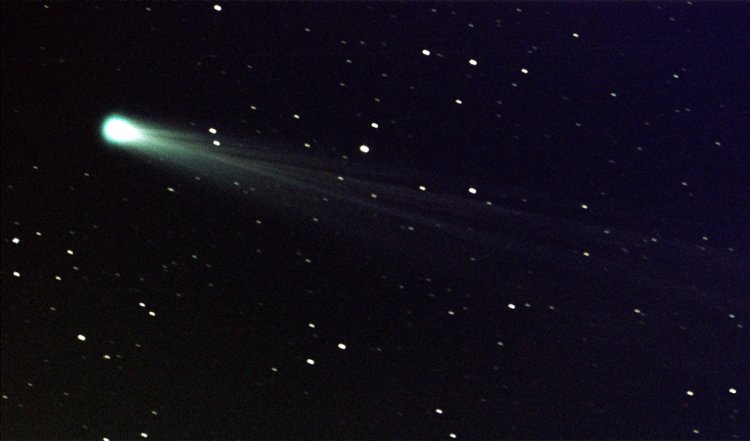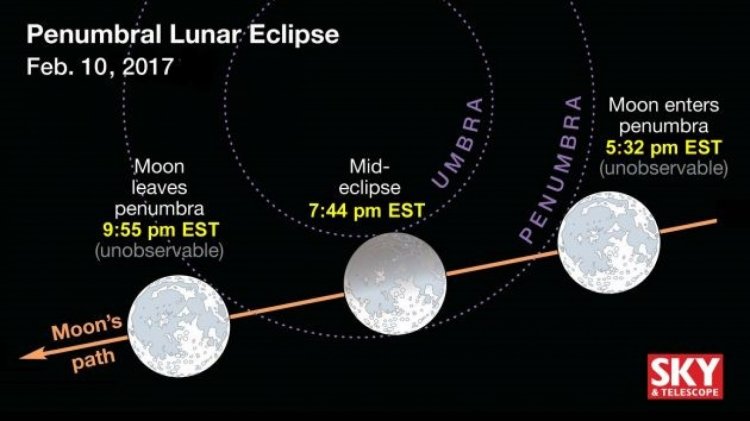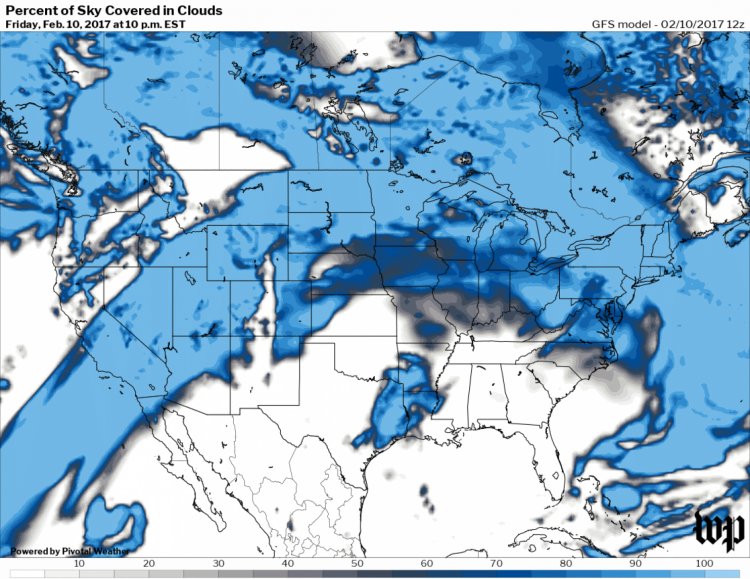 Even if you don't have a telescope or binoculars, we still have a way for you to see this comet Friday. (NASA) |
 Even if you don't have a telescope or binoculars, we still have a way for you to see this comet Friday. (NASA) |
Turn this evening into a cosmic experience — a full moon, lunar eclipse and the chance to see a pale green comet as it streaks by Earth. Oh, and beg for clear skies.
This month's so-called "Snow Moon" will pass through Earth's outer shadow just after sunset, turning its face varying shades of grey. Lunar eclipses occur when the Earth is optimally placed between the sun and the moon. With an added dose of serendipity, we're on our planet's primo dark side with front-row seats.
On the East Coast, the full moon climbs above the horizon around 5:30 p.m., just as it enters Earth's penumbral (outer) shadow and — ever so slowly — the lunar disk will start to dim and turn gray. Late afternoon twilight gives way to the evening dark skies. For practical purposes, the Eastern time zone will likely perceive the gray shading around 6:14 p.m., according to Alan MacRobert and Kelly Beatty, senior editors at Sky & Telescope magazine.
By the middle of the eclipse, at 7:44 p.m. Eastern time, the northern third of moon will be a noticeably darker gray, said astronomer Geoff Chester of the U.S. Naval Observatory.
After mid-eclipse, the graying begins to yield to the moon's normal brightness. The moon fully leaves the penumbral shadow at 9:55 p.m.
 During the lunar eclipse Friday, the moon nicks the outside of Earth's dark umbral shadow, causing deep gray shading around 7:44 p.m. (Sky & Telescope) |
But wait — there's more!
Let the kids stay up late, because Comet 45P/Honda-Mrkos-Pajdusáková (don't ask us how to pronounce all those names) makes its closest approach to Earth Friday night. You'll be able to see the greenish comet by telescope and binoculars in a dark location, but not with the naked eye.
Depending on where you're located, clouds may also prove to be a hindrance. A fairly large portion of the Northeast is forecast to be shrouded this evening, as well as the Great Lakes region and parts of the Southwest. Fortunately you can still watch, because the great folks at slooh.com will be webcasting the eclipse and the comet. And really, even if the skies were clear, that might be the best option if you want to see both events up-close.
 Cloud cover forecast for Friday evening. |
Slooh's live feed from various locations begins at 5:30 p.m. with the lunar eclipse. Experts will weigh in with a play-by-play around 7:30 p.m. during the eclipse maximum. At 10:30 p.m. ET, Slooh will begin the comet show. Join astronomers Gerard Monteux and Bob Berman to learn about this seventh-magnitude (not visible with the naked eye) celestial object.
For both live shows, send photos of the eclipse and comet to @Slooh on Twitter for a chance to be featured during the webcast.
This eclipse is a little like deja vu. Yes, you've seen it before — eclipses are dictated by the Saros cycle, where 6,585.3 days slip in between eclipses, according to retired NASA eclipse expert, Fred Espenak. This eclipse series lasts 12 to 15 centuries.
This eclipse is Saros 114. It has been around since the year 971 and it will last until June 22, 2233 (at 22:22:33 Universal Time!), according to NASA tables. The previous eclipse in this series occurred on Jan. 31, 1999, and before that, the eclipse occurred in the waning hours of Jimmy Carter's presidency on Jan. 20, 1981.
Facts do not lie, as the next lunar eclipse in this series is Feb. 22, 2035 — George Washington's 303rd birthday.